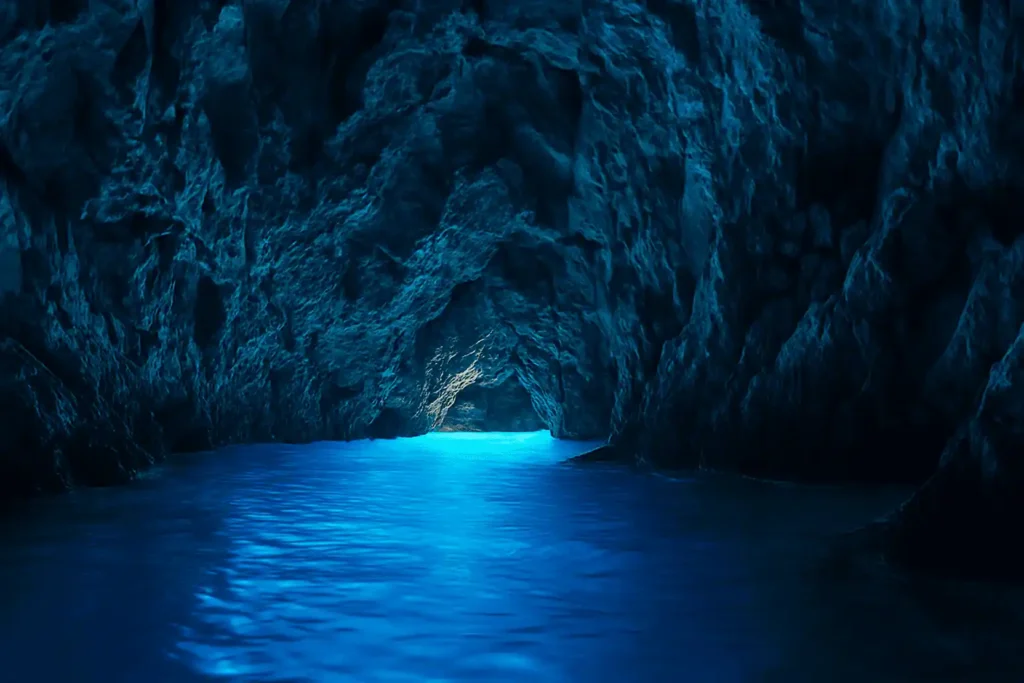Unveiling the Mystique: Exploring the Blue Caves Around the World
Have you ever dreamt of swimming in a grotto bathed in ethereal blue light? Blue caves, nature’s stunning masterpieces, offer just that. These captivating sea caves, found around the globe, draw adventurers and nature enthusiasts alike with their otherworldly beauty. But what exactly makes these caves so special? Let’s dive in and explore.
Q&A: All About Blue Caves
- What are blue caves? Blue caves are sea caves that are famous for the stunning blue light that illuminates them.
- What causes the blue color? The blue color is created when sunlight enters the cave, with the red wavelengths being absorbed, and the blue wavelengths reflecting off the white sandy bottom and back onto the cave walls.
- Where can I find blue caves? Blue caves can be found in various locations around the world, including Italy, Croatia, Japan, and more.
The Science Behind the Azure Glow
The magic of blue caves lies in a fascinating interplay of light and water. As sunlight streams into the cave, the water absorbs the red and yellow wavelengths. However, the blue wavelengths, being shorter, are reflected and scattered. This reflected blue light illuminates the cave, creating a mesmerizing azure glow. The clearer the water and the whiter the cave floor, the more vibrant the blue becomes. Therefore, the specific geological formation plays a significant role in the vividness of the blue color.
Journey to the World’s Most Enchanting Blue Caves
From the Mediterranean to Asia, blue caves dot the coastlines of several countries. Each cave boasts its unique charm and allure. Here are a few of the most famous ones:
- Blue Grotto, Capri, Italy: Perhaps the most famous of all, the Blue Grotto is a sea cave on the coast of Capri. Its intense blue color has captivated visitors for centuries. Therefore, it is a very popular tourist destination.
- Blue Cave, Biševo, Croatia: Located on the island of Biševo, this cave is known for its silvery-blue light. The best time to visit is between 11 AM and 2 PM when the sunlight is at its peak. Furthermore, its proximity to Split makes it easily accessible.
- Sapphire Sea Cave, Japan: Situated in a remote area, this Japanese treasure is known for its crystal-clear waters and stunning blue reflections.
- Waitomo Caves, New Zealand: While technically not sea caves, the Waitomo Caves are famous for their glowworms that create a similar luminous effect. These glowworms emit a bioluminescent glow that illuminates the cave’s interior, offering a truly unique experience. [Internal Link Suggestion]
- Benagil Caves, Algarve, Portugal: This is another beautiful sea cave that can be explored by boat or kayak. Many operators offer tours from nearby towns.
Planning Your Blue Cave Adventure
Visiting a blue cave requires some planning. Firstly, check the weather conditions, as rough seas can make access difficult or impossible. Secondly, consider the time of day; the intensity of the blue light varies depending on the sun’s position. Furthermore, book tours in advance, especially during peak season, as spots tend to fill up quickly. Reputable tour operators ensure safe and responsible exploration of these delicate ecosystems. [Outbound Link to a reputable travel site, such as Lonely Planet or National Geographic Travel]
Tips for a Memorable Experience
- Wear appropriate clothing: Bring swimwear, a towel, and comfortable shoes suitable for walking on potentially slippery surfaces.
- Protect yourself from the sun: Even inside the cave, reflected sunlight can be intense. Apply sunscreen and wear a hat.
- Bring a waterproof camera: Capture the magical moments inside the cave. A GoPro or similar action camera is ideal.
- Respect the environment: Avoid touching the cave walls or disturbing the marine life. Help preserve the beauty of these natural wonders for future generations.
- Listen to your guide: Follow their instructions for a safe and enjoyable experience.
The Future of Blue Caves: Conservation and Sustainability
As tourism to blue caves increases, it is crucial to ensure their conservation and sustainability. Therefore, responsible tourism practices are essential to minimize the impact of human activities on these delicate ecosystems. Support tour operators who prioritize environmental protection and promote sustainable tourism practices. Furthermore, consider donating to organizations dedicated to preserving these natural wonders. By working together, we can ensure that future generations can experience the magic of blue caves. [Outbound link to a relevant conservation organization, such as The Nature Conservancy or WWF]
Conclusion
Blue caves are more than just stunning geological formations; they are gateways to a world of wonder and enchantment. Therefore, if you are looking for a unique and unforgettable travel experience, consider adding a blue cave to your bucket list. Explore the depths, marvel at the azure glow, and create memories that will last a lifetime.
Ready to embark on your own blue cave adventure? Share your thoughts and favorite destinations in the comments below! Explore more of our travel guides for inspiration and start planning your next unforgettable trip!


